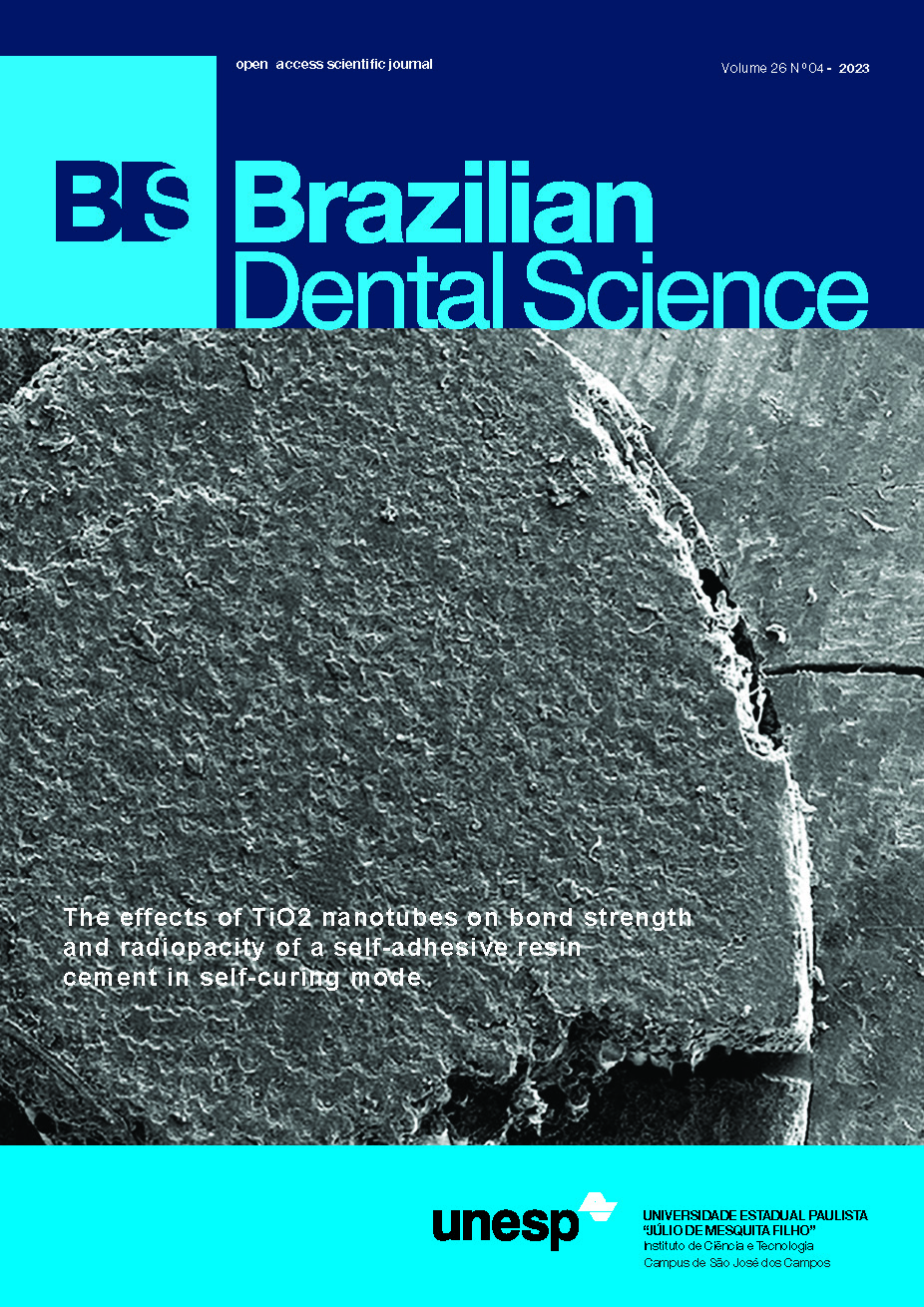Evaluation of short- and long-term bond strength of zirconia after different surface treatments
DOI:
https://doi.org/10.4322/bds.2023.e4001Resumo
Objective: The aim of the study was to evaluate the short and long-term effects of different surface treatments on the bond strengths of zirconia. Material and Methods: 225 blocks of sintered zirconia samples (4 x 4 x 3 mm) were divided into five groups and subjected to different surface treatments: control group (without surface treatment), alumina group (sandblasting [25- micro m-aluminum-oxide]), alumina+Ambar Universal-APS (AU) group, CoJet group (silica-coated [30-micro m silica-modified aluminum particles]), and CoJet+AU group. Subsequently, zirconia samples were cemented against resin samples (total dimensions: 8x8x6mm) and assigned to three storage conditions: dry, humid (artificial saliva at 37°C for 30-days) or thermocycling [100.000-cycles] (n=15 per group). The microtensile bond strength (micro TBS) was determined using a universal testing machine. The failure modes were observed and analyzed using a stereomicroscope. Normality tests, descriptive statistics, and two-way ANOVA, followed by post-hoc comparisons, were performed to evaluate the effect of surface treatments and storage conditions on micro TBS (alpha=0.05). Results: micro TBS was influenced by surface treatment in the short and long-term (P<0.0001). The highest values were found in CoJet+AU in dry (33.51 ±2.48 MPa), humid (32.87 ± 2.68 MPa) and thermocycling (21.37 ±1.68 MPa) storage conditions compared with others. Interestingly, no significant differences in micro TBS were found among alum +AU and CoJet alone under any of the three storage conditions. Adhesive failure increased in all groups after thermocycling, but CoJet+AU had the lowest values of adhesive failure compared with others. Conclusion: The combination of CoJet and Ambar universal as a surface treatment for zirconia specimens provides significantly higher short and long-term bond strengths of adhesive cementation.
KEYWORDS
Adhesives; CoJet; MDP; Sandblasting; Zirconia.
Downloads
Downloads
Publicado
Como Citar
Edição
Seção
Licença
TRANSFERÊNCIA DE DIREITOS AUTORAIS E DECLARAÇÃO DE RESPONSABILIDADE
Toda a propriedade de direitos autorais do artigo "____________________________________________________________________" é transferido do autor(es) para a CIÊNCIA ODONTOLÓGICA BRASILEIRA, no caso do trabalho ser publicado. O artigo não foi publicado em outro lugar e não foi submetido simultaneamente para publicação em outra revista.
Vimos por meio deste, atestar que trabalho é original e não apresenta dados manipulados, fraude ou plágio. Fizemos contribuição científica significativa para o estudo e estamos cientes dos dados apresentados e de acordo com a versão final do artigo. Assumimos total responsabilidade pelos aspectos éticos do estudo.
Este texto deve ser impresso e assinado por todos os autores. A versão digitalizada deverá ser apresentada como arquivo suplementar durante o processo de submissão.




























